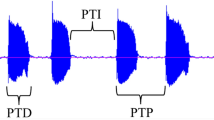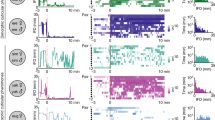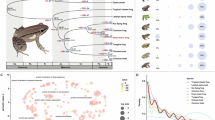Abstract
Dacus tryoni (Frogg.) mates at dusk. During courtship, males stridulate by drawing their wings across a pair of combs formed from large bristles on the third abdominal tergite. This produces a high pitched buzz, audible to the human ear, which is considered to be a mating call1. It has now been demonstrated that the male also produces a sex pheromone which is released at the same time as stridulation. This discovery is particularly interesting, for it not only provides a further example of a species in which the male produces a sex pheromone, but also is the only known case in which a sex pheromone is stored in a special reservoir before release. This communication briefly describes some of the experimental work which has been carried out with the pheromone.
This is a preview of subscription content, access via your institution
Access options
Subscribe to this journal
Receive 51 print issues and online access
$199.00 per year
only $3.90 per issue
Buy this article
- Purchase on SpringerLink
- Instant access to full article PDF
Prices may be subject to local taxes which are calculated during checkout
Similar content being viewed by others
References
Monro, J., Austral. J. Sci., 16, 60 (1953).
Feron, M., Rev. Pathol. Vegetate et Entomol. Agr., France, 41, 1 (1962).
Author information
Authors and Affiliations
Rights and permissions
About this article
Cite this article
FLETCHER, B. Storage and Release of a Sex Pheromone by the Queensland Fruit Fly, Dacus tryoni (Diptera: Trypetidae). Nature 219, 631–632 (1968). https://doi.org/10.1038/219631a0
Received:
Issue date:
DOI: https://doi.org/10.1038/219631a0
This article is cited by
-
Raspberry ketone supplements provided to immature male Queensland fruit fly, Bactrocera tryoni (Froggatt), increase the amount of volatiles in rectal glands
Chemoecology (2021)
-
Rectal gland exudates and emissions of Bactrocera bryoniae: chemical identification, electrophysiological and pheromonal functions
Chemoecology (2021)
-
Sampling technique biases in the analysis of fruit fly volatiles: a case study of Queensland fruit fly
Scientific Reports (2020)
-
Crowded developmental environment promotes adult sex-specific nutrient consumption in a polyphagous fly
Frontiers in Zoology (2019)
-
Domestication modifies the volatile emissions produced by male Queensland fruit flies during sexual advertisement
Scientific Reports (2018)



